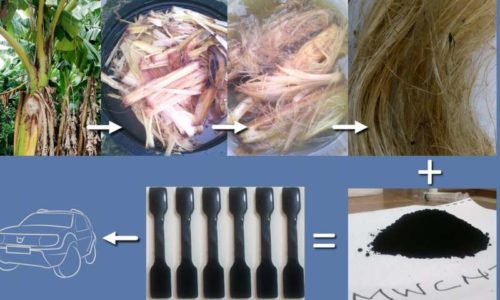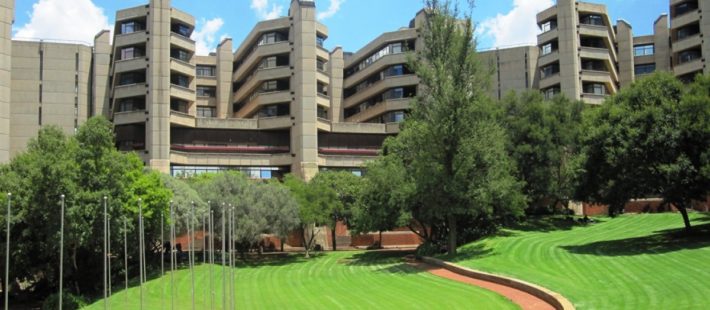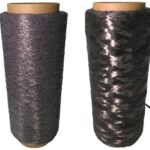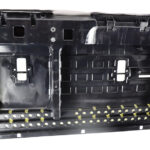Carmakers have been using natural fibres for decades in high-end sedans and coupes. Natural fibers such as hemp, flax and wood are used in interior door panels; as well as engine, interior and noise insulation. Unlike steel or aluminum, natural fiber composites do not rust or corrode. They can also be durable and easily molded. The biggest advantages of fiber reinforced polymer composites for cars are light weight, good crash properties, and noise- and vibration-reducing characteristics. But making more parts of a vehicle from renewable sources is a challenge. Natural fiber polymer composites can crack, break and bend. The reasons include low tensile, flexural and impact strength in the composite material. Researchers from the University of Johannesburg have now shown that plantain pseudo-stems are a promising renewable source for an emerging type of lighter nanocomposite materials for the automotive industry. Reducing a vehicle’s mass can improve fuel efficiency.
Plantain is a starchy type of banana and is a year-round staple food crop in tropical regions of Africa, Asia and South America. Many types of plantain are eaten cooked. The research group combined the natural plantain fibers with carbon nanotubes and epoxy resin to form a natural fiber-reinforced polymer hybrid nanocomposite material.
For molding this composite material, the optimum amount of nanotubes was 1% by weight of the plantain-epoxy resin combined. The resulting plantain nanocomposite was much stronger and stiffer than epoxy resin on its own. The composite had 31% more tensile strength and 34% more flexural strength than the epoxy resin alone. Furthermore, the nanocomposite also had 52% higher tensile modulus and 29% higher flexural modulus than the epoxy resin alone.
“The hybridization of plantain with multi-walled carbon nanotubes increases the mechanical and thermal strength of the composite. These increases make the hybrid composite a competitive and alternative material for certain car parts,” says Prof Tien-Chien Jen, the lead researcher in the study and the head of the Department of Mechanical Engineering Science at the University of Johannesburg.

Natural fibers vs metals
Producing car parts from renewable sources have several benefits, says Dr. Patrick Ehi Imoisili, a postdoctoral researcher in the Department of Mechanical Engineering Science at the University of Johannesburg. “There is a trend of using natural fiber in vehicles. The reason is that natural fibers composites are renewable, low-cost and low-density. They have high specific strength and stiffness. The manufacturing processes are relatively safe,” says Imoisili. “Using car parts made from these composites, can reduce the mass of a vehicle. That can result in better fuel-efficiency and safety. These components will not rust or corrode like metals. Also, they can be stiff, durable and easily molded.”
However, some natural-fiber-reinforced-polymer composites currently have disadvantages such as water absorption, low impact strength and low heat resistance, causing effects such as cracking, bending or warping of a car part, says Imoisili. The researchers subjected the plantain nanocomposite to a series of standardized industrial tests. These included ASTM Test Methods D638 and D790, impact testing according to the ASTM A-370 standard, and ASTM D-2240. The tests showed that a composite with 1% nanotubes had the best strength and stiffness compared to epoxy resin alone. The plantain nanocomposite also showed marked improvement in micro hardness, impact strength and thermal conductivity compared to epoxy resin alone.
Molding a nanocomposite from natural fibers
The researchers fabricated a compression-molded stress test object. They used one part inedible plantain fibers, four parts epoxy resin and multi-walled carbon nanotubes. The epoxy resin and nanotubes came from commercial suppliers. In particular, the epoxy was similar to resins that auto manufacturers use in certain car parts. The plantain fibers came from the “trunks” or pseudo-stems, of plantain plants in the southwestern region of Nigeria. Then, the pseudo-stems consist of tightly overlapping leaves.
The researchers treated the plantain fibers with several processes. The first process is an ancient method called water retting to separate plant fibers from stems. In the second process, the fibers were soaked in a 3% caustic soda solution for four hours. After drying, the fibers were treated with high-frequency microwave radiation of 2.45GHz at 550W for two minutes. The caustic soda and microwave treatments improved the bonding between the plantain fibers and the epoxy resin in the nanocomposite.
Next, the researchers dispersed the nanotubes in ethanol to prevent bunching of the tubes in the composite. After that, the plantain fibers, nanotubes and epoxy resin were combined inside a mold. The mold was then compressed with a load for 24 hours at room temperature.
Food crop vs. industrial raw material
Plantain is grown in tropical regions worldwide. This includes Mexico, Florida and Texas in North America; Brazil, Honduras, Guatemala in South and Central America; India, China, and Southeast Asia. In West and Central Africa, farmers grow plantain in Cameroon, Ghana, Uganda, Rwanda, Nigeria, Cote d’Ivoire, and Benin.
Using biomass from major staple food crops can create problems in food security for people with low incomes. In addition, the automobile industry will need access to reliable sources of natural fibers to increase use of natural fiber composites. In the case of plantains, potential tensions between food security and industrial uses for composite materials are low. This is because plantain farmers discard the pseudo-stems as agro-waste after harvest.
Source: University of Johannesburg











